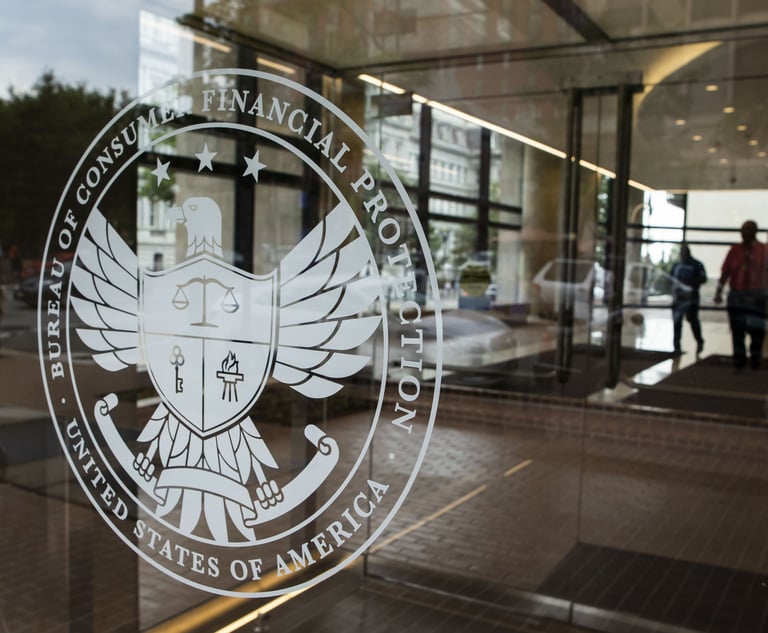 AdobeStock image
AdobeStock image AI and Cybersecurity: Possible New Risks and Legal Implications
In this article, we explore the intersection of AI and cybersecurity, including the main risks and best practices for organizations that develop or deploy AI tools, while also considering the future of AI regulation.
May 08, 2023 at 09:08 AM
7 minute read
Over recent months, artificial intelligence has rapidly evolved, with the emergence of various applications that could have a transformative effect on industries and societies across the globe. At the same time, the cyber threat landscape is becoming increasingly complex, raising questions about how AI will impact cybersecurity, including the possible new risks its use could introduce and the potential legal implications that are evolving in response to these developments.
AI can be both a sword and a shield: bad actors increasingly have new methods to effectuate their attacks, while at the same time organizations are able to leverage new defensive capabilities, such as improvements in detecting attacks, creating risk management tools, and identifying suspicious activity. With this in mind, the legal and regulatory standards governing what "reasonable security" looks like will likely evolve just as quickly as developments in the deployment of AI technologies and the changing cyber threat landscape. In this article, we explore the intersection of AI and cybersecurity, including the main risks and best practices for organizations that develop or deploy AI tools, while also considering the future of AI regulation.
AI and Threat Actor Risks
Threat actors are increasingly using AI to generate more frequent, effective and widespread attacks. For example, security experts have warned that threat actors can use generative AI to develop malware, data encryption code, and new dark web marketplaces. Malware powered by AI may become more intelligent and have the ability to search for specific documents or sensitive data within infected machines. Threat actors can also use generative AI to improve the fidelity of phishing emails and other social engineering attacks. Without the misspellings and grammar mistakes, spam filters and victims alike may fail to detect malicious messages more often.
This content has been archived. It is available through our partners, LexisNexis® and Bloomberg Law.
To view this content, please continue to their sites.
Not a Lexis Subscriber?
Subscribe Now
Not a Bloomberg Law Subscriber?
Subscribe Now
NOT FOR REPRINT
© 2025 ALM Global, LLC, All Rights Reserved. Request academic re-use from www.copyright.com. All other uses, submit a request to [email protected]. For more information visit Asset & Logo Licensing.
You Might Like
View All
NYAG’s Enforcement of Mandated Cybersecurity Safeguards Sends Expensive Shock Waves through Varying Industries
9 minute read

Law Firms Mentioned
Trending Stories
- 1Rejuvenation of a Sharp Employer Non-Compete Tool: Delaware Supreme Court Reinvigorates the Employee Choice Doctrine
- 2Mastering Litigation in New York’s Commercial Division Part V, Leave It to the Experts: Expert Discovery in the New York Commercial Division
- 3GOP-Led SEC Tightens Control Over Enforcement Investigations, Lawyers Say
- 4Transgender Care Fight Targets More Adults as Georgia, Other States Weigh Laws
- 5Roundup Special Master's Report Recommends Lead Counsel Get $0 in Common Benefit Fees
Who Got The Work
J. Brugh Lower of Gibbons has entered an appearance for industrial equipment supplier Devco Corporation in a pending trademark infringement lawsuit. The suit, accusing the defendant of selling knock-off Graco products, was filed Dec. 18 in New Jersey District Court by Rivkin Radler on behalf of Graco Inc. and Graco Minnesota. The case, assigned to U.S. District Judge Zahid N. Quraishi, is 3:24-cv-11294, Graco Inc. et al v. Devco Corporation.
Who Got The Work
Rebecca Maller-Stein and Kent A. Yalowitz of Arnold & Porter Kaye Scholer have entered their appearances for Hanaco Venture Capital and its executives, Lior Prosor and David Frankel, in a pending securities lawsuit. The action, filed on Dec. 24 in New York Southern District Court by Zell, Aron & Co. on behalf of Goldeneye Advisors, accuses the defendants of negligently and fraudulently managing the plaintiff's $1 million investment. The case, assigned to U.S. District Judge Vernon S. Broderick, is 1:24-cv-09918, Goldeneye Advisors, LLC v. Hanaco Venture Capital, Ltd. et al.
Who Got The Work
Attorneys from A&O Shearman has stepped in as defense counsel for Toronto-Dominion Bank and other defendants in a pending securities class action. The suit, filed Dec. 11 in New York Southern District Court by Bleichmar Fonti & Auld, accuses the defendants of concealing the bank's 'pervasive' deficiencies in regards to its compliance with the Bank Secrecy Act and the quality of its anti-money laundering controls. The case, assigned to U.S. District Judge Arun Subramanian, is 1:24-cv-09445, Gonzalez v. The Toronto-Dominion Bank et al.
Who Got The Work
Crown Castle International, a Pennsylvania company providing shared communications infrastructure, has turned to Luke D. Wolf of Gordon Rees Scully Mansukhani to fend off a pending breach-of-contract lawsuit. The court action, filed Nov. 25 in Michigan Eastern District Court by Hooper Hathaway PC on behalf of The Town Residences LLC, accuses Crown Castle of failing to transfer approximately $30,000 in utility payments from T-Mobile in breach of a roof-top lease and assignment agreement. The case, assigned to U.S. District Judge Susan K. Declercq, is 2:24-cv-13131, The Town Residences LLC v. T-Mobile US, Inc. et al.
Who Got The Work
Wilfred P. Coronato and Daniel M. Schwartz of McCarter & English have stepped in as defense counsel to Electrolux Home Products Inc. in a pending product liability lawsuit. The court action, filed Nov. 26 in New York Eastern District Court by Poulos Lopiccolo PC and Nagel Rice LLP on behalf of David Stern, alleges that the defendant's refrigerators’ drawers and shelving repeatedly break and fall apart within months after purchase. The case, assigned to U.S. District Judge Joan M. Azrack, is 2:24-cv-08204, Stern v. Electrolux Home Products, Inc.
Featured Firms
Law Offices of Gary Martin Hays & Associates, P.C.
(470) 294-1674
Law Offices of Mark E. Salomone
(857) 444-6468
Smith & Hassler
(713) 739-1250







